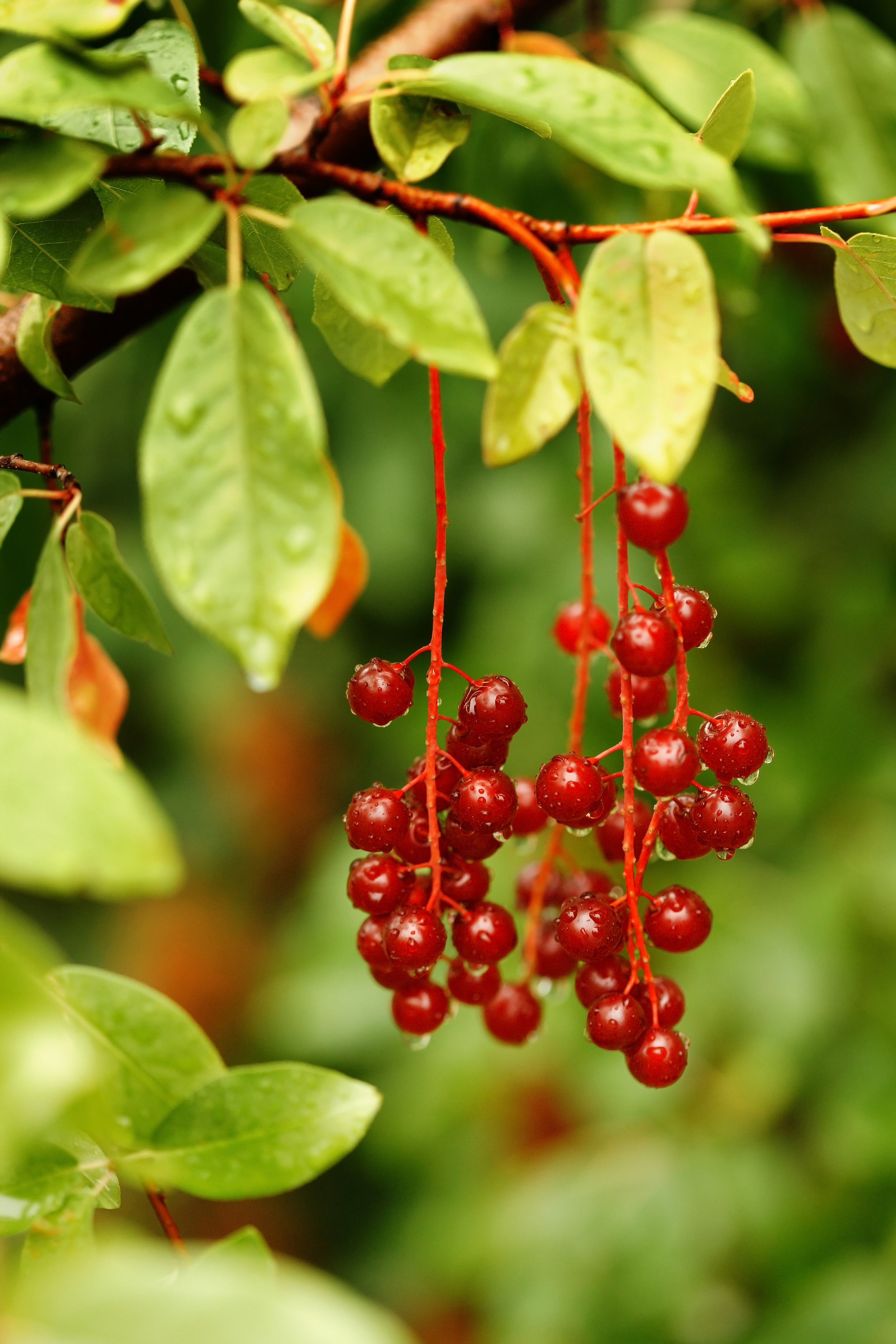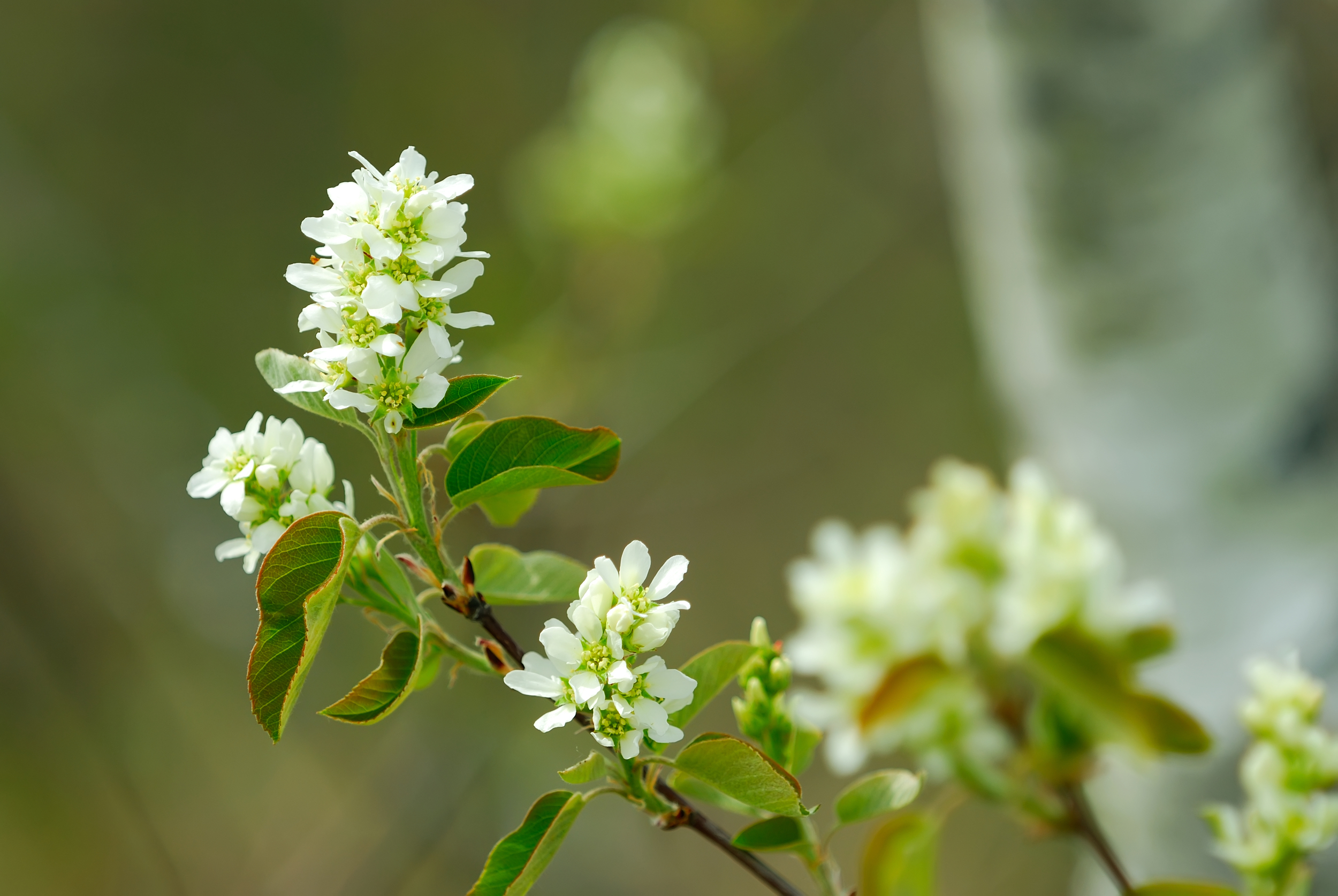Prunus virginiana (Chokecherry)
Deciduous shrub to tree up to 30 ft. tall with bright red to dark purple berries and cylindrical clusters of white flowers, blooming May to August. Adapted to a wide range of well drained thin and infertile, to deep and nutrient-rich soils, and is also tolerant of moderately acidic to alkaline sites; intolerant of heavy clays. Found on moist or seasonally moist sites such as riparian areas, woodlands, drainages, foothills and mountain slopes; up to 10,000 ft. elevation. Widely distributed and abundant in numerous habitat types. Rhizomatous, forming loose to dense thickets that sprout readily after wildfire. Often planted as a landscaping ornamental. Fruits are important to many birds and mammals, including bears. Deer browse extensively in winter. Flowers are an important nectar source for ants and insect pollinators, including butterflies and honeybees. Caterpillar host of California hairstreak butterfly, Small-eyed sphinx and Chokecherry leafroller moth.
DISTRIBUTION / ADAPTATION
INFORMATION & ATTRIBUTES
Family: Rosaceae
Duration: Perennial
Growth Habit: Shrub/tree
Native Status: Native
Growth Form: Multiple stem
Mature Height: 25 ft.
Bloom Color: White
Fruit/Seed Color: Black
Bloom Period: Mid spring
Annual Precipitation: 13-65 in.
Drought Tolerance: Medium
Shade Tolerance: Intolerant
Elevation: ft.
Fire Resistance: No
Fire Tolerance: High
Nitrogen Fixation: None
SOIL ADAPTATION
Coarse Texture: Yes
Medium Texture: Yes
Fine Texture: Yes
Salinity Tolerance: Medium
CaCO3 Tolerance: High
pH Range: 5.2-8.4
SEEDING NOTES
Seeds per Pound: 4,900
Seeding Rate: PLS lbs/acre
Season: Fall
Days to Germination:
VARIETIES & LOCAL ACCESSIONS
None



